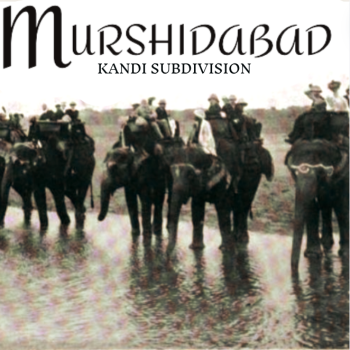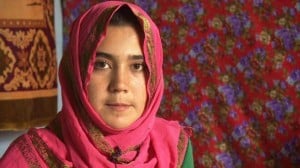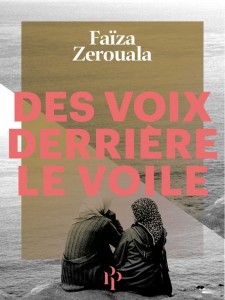 For me, Gayle Tzemach Lemmon’s The Dressmaker of Khair Khana is a journalistic field story masquerading as a feel good beach novel in the Oprah Book Club genre. That isn’t to say I didn’t enjoy reading it, but I felt it warranted something more. While Lemmon’s storytelling is her strength–the way the book is organized is captivating–it also stops the book short from sending its message home: fact becomes fiction and hard realities become just a story. However, considering the polemic lately surrounding another “Afghanistan” book, Three Cups of Tea, make no mistake that The Dressmaker of Khair Khana has solid journalistic chops and remains based in fact.
For me, Gayle Tzemach Lemmon’s The Dressmaker of Khair Khana is a journalistic field story masquerading as a feel good beach novel in the Oprah Book Club genre. That isn’t to say I didn’t enjoy reading it, but I felt it warranted something more. While Lemmon’s storytelling is her strength–the way the book is organized is captivating–it also stops the book short from sending its message home: fact becomes fiction and hard realities become just a story. However, considering the polemic lately surrounding another “Afghanistan” book, Three Cups of Tea, make no mistake that The Dressmaker of Khair Khana has solid journalistic chops and remains based in fact.
The story follows the main character, Kamila, had just earned a teaching certificate and was ready to continue at university when the Taliban came to power in Kabul. While her parents and older brother left, Kamila, her sisters and her younger brother (who would wind up being the sisters’ mahram) stayed in Kabul in order to keep the family home. Kamila’s oldest sister, already married with children, also stayed in Kabul, and she soon moves in to the family home. As savings run out, Kamila realizes that she needs to work, but how can women work under the Taliban? Kamila decides to learn how to sew, with the help of her oldest sister who is a talented seamstress in her own right.
Her business plan was simple: deliver what was promised and on time, and be the best. Within months, demand exceeded what their family was able to supply, and their business was making enough to have employees. Their first employee is a widow dependent on her brother-in-law. Thus begins the story of how one girl’s idea helped an entire community of women raise up by themselves. The story goes through Kamila’s twists and turns in avoiding the wrath of the Taliban and becoming a successful entrepreneur where her innate business sense saved her every time, even when taking chances.
The most compelling part of the story for me was the “Life goes on” aspect. Kamila and her sisters’ ability just to pick up and get on with it, not only to help their own family, but also to help those of the women of their neighborhood, is absolutely amazing. Entrepreneurship is not for everyone, and to think that Kamila, still in her teens, not only survived but thrived and learned as she went along, is something not many people are capable of, let alone teenagers in Taliban-era Afghanistan. I even had a few “where did I go wrong in my life” moments when I realized that Kamila and I are the same age, which drove the story home even more for me.
I appreciated the journalistic sensibilities of Lemmon’s storytelling; she really let the characters speak for themselves, a rare feat when writing on Muslim women. There were times when I felt Kamila was telling the story and not Lemmon.
That said, there were times I felt she came perilously close, like a lot of writers, to toeing the line of the false dichotomy Islam ≠ modernity. For example, in chapter two, when she describes the religious education of the Taliban (boys) arriving in Kabul . There, you got some of the same tired stuff in the genre: “Back in Afghanistan’s good old days, women wore miniskirts.”
There were other times where I felt she tried too hard to paint the women in the novel as “good Muslims” –always pointing out that they taught Koran, prayed five times a day or whatever, when for me, the Islam of the women (especially compared to horrors propagated by the Taliban) was never in question.
I wonder, if for less Muslim-savvy readers, would it be easy to fall in to the “Islam is bad” trap while reading this? However, the situation in Afghanistan was so complex at that time (and still is) that telling any story is hard. And conversely, for those people who do begin this book with the idea that Muslim women are submissive and brainless have enough information to change their minds by the end of the book that shows Muslim women as courageous, persevering, and in charge of their destinies, and yes, even in Afghanistan.
Men are also absent in this book, which is both a blessing and a curse. Finally, a book about Muslim women with no men! But at the same time, the men in the book are two-dimensional characters. They are either faceless, brainless Taliban thugs, or absent and kindly, like Kamila’s father and older brother. Even their little brother, the family’s mahram, is described more as a “resource” than anything else. But relegating men to a side story lets the sisters’ story shine through even more.
The hallmark of any book about Muslim women for me is “Did I groan or roll my eyes while reading it or not?” (I know, I have low standards) In this regard, The Dressmaker of Khair Khana got neither groans nor eyerolls. Lemmon succeeds in her inspirational portrayal, based on solid journalistic research, of the Siddiqi sisters and their colleagues as being entrepreneurs, community organizers and strong women. Although the lightness of the storytelling makes the drama of the context lose its punch, it is a feel-good, pleasurable read at the crossroads between journalism and novel.















